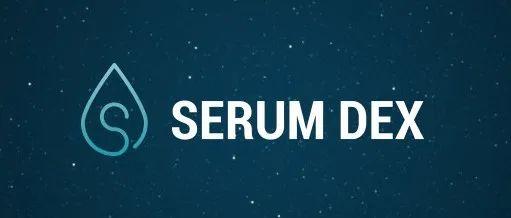本文翻譯自 FTX 創始人、Serum 顧問 SBF 於 2020 年 9 月 13 日發佈的關於流動性挖礦的最新推特,文末附推特原文。
流動性挖礦是可持續的嗎?它是愚蠢的,還是具有革命性意義的呢?
這不是在嘗試回答這些以食物所命名的通證(food tokens)在短期內會漲還是會跌的問題。而是在嘗試關注這些通證的長期影響。
本文並非投資建議。我個人也持有一些以食物所命名的通證。
流動性挖礦背後的核心金融交易是什麼?
從根本上來說,新項目通常會把所有通證或大部分通證空投給 DeFi 用戶,以提升其協議價值或總鎖定價值(TVL)。
那麼,這種模式是否合理呢?
對於這一點,很多時候是歸結爲:你認爲 DeFi 究竟應該具有多少價值?
現在,我將做這樣一個假設:假定 DEFI-PERP (編者注:DEFI-PERP 是 FTX 推出的 DeFi 指數合約) 目前定價合理。DEFI-PERP 對標了多種當下最熱門 DeFi 項目(編者注:如 Kyber Network (KNC)、Aave (LEND)和 Maker (MKR)等)。
目前,DEFI-PERP 對標的項目通證市值大約在在 2 億到 20 億美元左右。以樂觀的角度來評估的話,我認爲其餘以蔬菜、食物命名的 DeFi 通證市值加總起來,大概等同於剩下的 DeFi 價值總和,差不多在 60 億美元上下。
也就是說,這些流動性挖礦所獲得的通證能產生最多那麼高的估值以及交易成本。
那麼,真正產生的價值又會是多少呢?
有一些 DeFi 項目的估值的確很離譜,我也不知道究竟是誰在買入這些 DeFi 通證。如果剔除這些項目,其實 DeFi 項目的估值也並沒有那麼瘋狂。YFI 目前的總市值在 10 億美元左右,一些例如 COMP、BAL、SNX 和 LEND 等通證市值大抵是由 YFI 所推動,剩下的通證市值總和也差不多有幾億美元。
好,讓我們來看看交易成本(transaction cost)又是什麼樣子的呢?
現在,人們每個月大約要花上 1 億美元去支付礦工費 (gas 費用)。此外,人們還在 DeFi 上鎖定了約 100 億美元的資金,如果您用每年 20% 作爲基準加密貨幣資金成本進行計算,那麼又要再加上大約 10 億美元的成本。
所以,如果把上述金額相加的話,你就會得到 ……
當然,你懂的,大約在 60 億美元或者更多。老實說,這對我來說完全是意料之外的結果。
現在,我在計算中有意忽略了某些通證,以及人們的時間機會成本。
但是,好吧,我依然感到非常驚訝。我以爲以食物命名的這些 DeFi 通證 (Food Token) 是一場顯而易見的泡沫。但現在我反而不那麼確定了。
這種方法顯然忽視了通證之間的獨特性,有些具有明顯的實用性!舉例來說,像是 Compound、Aave 和 Balancer 等,就算忽略其具有流動性挖礦的設計,用戶都是會使用的。而 Cream、SushiSwap 等,則是從一些有用的項目中分叉出來的。
yearn.finance 卻是一個與衆不同的案例——目前,它大部分是和流動性挖礦有關,但同時它算得上是流動性挖礦中的王者,流動性挖礦幣種的鼻祖。所以說,它從中分得一杯羹還挺合理的。
所以,綜上所述,以食物命名的這些 DeFi 通證們顯然是一個巨大的泡沫,我從一開始就這麼認爲。
但是,它也有可能不是,或許只是我的想法錯了?
顯而易見,一些項目還是會崩盤、一些會出現問題、還有一些是會徹底搞砸。但無論如何,哪怕只有少數項目能達成這些所有同類型項目所想要到達的目標,這些少數項目也會彌補其它項目所缺失的部分。
———————
以下爲 SBF 的推特原文:
Is yield farming sustainable? Is it stupid? Is it revolutionary?
This is_not_trying to answer the question of whether food tokens will go up or down short-term. It\’s trying focus on the long-term ramifications of it.
What is the core financial transaction behind yield farming?
Well, basically: new projects drop most or all of their tokens on DeFi users in return for valuation and TVL.
Are those justified?
A lot for this will come down to what you think DeFi should be worth.
For now, I\’m going to make the following arbitrary assumption: that https://ftx.com/trade/DEFI-PERP is \”fair\”. DEFI-PERP is currently basically made up of the largest DeFi projects pre-yield-farming.
So, the projects in DEFI-PERP are worth about $200m-$2b right now.
I think that optimistically, vegetables all together are worth about as much as the rest of DeFi — so maybe like $6b or so.
That means that giving away all the yield farming coins can generate at most that amount of valuation, and that amount of transaction costs.
So how much is it in fact generating? So put it all together and you get…
…well, you know, $6b or so. I\’m gonna be honest, I wasn\’t expecting that, at all.
Now I ignored some coins from the calculation, intentionally; and I ignored the opportunity cost of peoples\’ time.
But, like, ok, so I\’m still surprised. I thought food tokens were obviously a bubble.
Now I\’m not so sure.
This is also obviously ignoring the difference between different coins. Some have obvious utility! @compoundfinance, @AaveAave, @BalancerLabs, etc. are important products people use even ignoring farming; @CreamdotFinance, @SushiSwap, etc. are forks on useful products.
@iearnfinance is a weird case — right now it\’s mostly just about farming, but it\’s also the king of farming, the meta-farming coin, and so it kinda makes sense that it should get a decent piece of that pie.
So, TL;DR: obviously food tokens are a ridiculous bubble, it was clear to me from the beginning.
But also maybe it\’s not and maybe I was wrong about that?
Obviously some will still crash, and some will founder, and some will fuck up magnificently, but if even a few get to where they\’re trying to go, that could make up for the rest.

